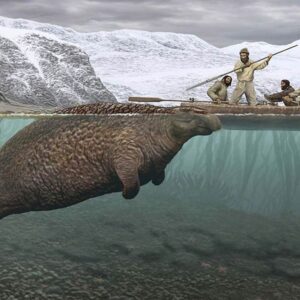Animals
Top 10 Extinct Wild Animals
The world has seen countless species come and go, each with its own unique story. Extinction, though a natural part of evolution, has been accelerated by human activities over the centuries. This article takes you through the top 10 extinct wild animals, highlighting their significance, causes of extinction, and the legacy they’ve left behind.
1. Dodo (Raphus cucullatus)
Habitat: Mauritius
Extinction Date: Late 17th century
Causes: Human hunting, introduced species
The dodo, a flightless bird native to Mauritius, is perhaps the most famous symbol of extinction. When humans arrived on the island, they hunted the dodo for food. Furthermore, the introduction of non-native animals like pigs, rats, and monkeys, which preyed on dodo eggs, sealed the bird’s fate. The dodo’s extinction was rapid, taking place within a century of its discovery by Europeans. Today, the dodo is remembered as a poignant reminder of the consequences of human interference with nature.
2. Passenger Pigeon (Ectopistes migratorius)
Habitat: North America
Extinction Date: 1914
Causes: Overhunting, habitat destruction
Once numbering in the billions, the passenger pigeon was one of the most abundant birds in North America. However, excessive hunting and deforestation led to a drastic decline in their population. The last known passenger pigeon, named Martha, died in captivity in 1914 at the Cincinnati Zoo. The passenger pigeon’s extinction is a stark example of how overexploitation can wipe out even the most numerous of species.
3. Tasmanian Tiger (Thylacinus cynocephalus)
Habitat: Tasmania, Australia, New Guinea
Extinction Date: 1936
Causes: Hunting, disease, habitat loss
The Tasmanian tiger, also known as the thylacine, was a carnivorous marsupial native to Australia, Tasmania, and New Guinea. Often blamed for livestock attacks, it was heavily hunted. Competition with dogs, disease, and habitat destruction also contributed to its extinction. The last known thylacine died in Hobart Zoo in 1936. Efforts are being made to clone the species, but for now, it remains a symbol of the consequences of human ignorance.

4. Great Auk (Pinguinus impennis)
Habitat: North Atlantic
Extinction Date: Mid-19th century
Causes: Overhunting, egg collection
The great auk was a large, flightless bird that lived in the North Atlantic. It was hunted for its feathers, meat, and oil, and its eggs were also collected extensively. By the mid-19th century, overexploitation led to the great auk’s extinction. The last confirmed sighting was in 1852. The great auk is often cited in discussions on the importance of wildlife conservation.
5. Steller’s Sea Cow (Hydrodamalis gigas)
Habitat: Bering Sea
Extinction Date: 1768
Causes: Overhunting
Steller’s sea cow was a massive marine mammal discovered by Europeans in 1741. Named after naturalist Georg Wilhelm Steller, it was hunted for its meat, blubber, and hide. Within 27 years of its discovery, the species was driven to extinction. The extinction of Steller’s sea cow highlights the vulnerability of newly discovered species to overexploitation.

6. Woolly Mammoth (Mammuthus primigenius)
Habitat: Northern Hemisphere
Extinction Date: c. 2000 BC
Causes: Climate change, human hunting
The woolly mammoth, with its long, curved tusks and shaggy coat, roamed the cold steppes of the Northern Hemisphere during the Ice Age. While small populations survived on isolated islands until about 2000 BC, most mammoths died out due to climate change and human hunting. Scientists are exploring de-extinction methods, including cloning, to bring the woolly mammoth back, though it remains a contentious topic.
7. Quagga (Equus quagga quagga)
Habitat: South Africa
Extinction Date: 1883
Causes: Overhunting
The quagga, a subspecies of the plains zebra, had a unique appearance, with stripes only on the front half of its body. Native to South Africa, it was hunted extensively for its meat and hide. The last known quagga died in captivity in Amsterdam in 1883. Recent genetic studies have initiated a breeding program to recreate the quagga through selective breeding of zebras, known as the Quagga Project.
8. Pyrenean Ibex (Capra pyrenaica pyrenaica)
Habitat: Pyrenees, Spain
Extinction Date: 2000
Causes: Hunting, disease, competition with domestic animals
The Pyrenean ibex was a subspecies of wild goat that lived in the Pyrenees mountains. Overhunting and disease led to its decline, and the last known individual died in 2000. A cloning attempt in 2003 briefly brought the species back to life, but the cloned ibex died shortly after birth due to lung defects. The Pyrenean ibex remains a case study in the possibilities and limitations of cloning technology.
9. Caribbean Monk Seal (Neomonachus tropicalis)
Habitat: Caribbean Sea, Gulf of Mexico
Extinction Date: 1952
Causes: Overhunting, habitat loss
The Caribbean monk seal was once found throughout the Caribbean Sea and the Gulf of Mexico. It was heavily hunted for its oil-rich blubber, and its habitat was degraded by human activities. By 1952, the species was declared extinct. Conservationists are now working to protect the remaining species of monk seals, such as the Hawaiian monk seal and the Mediterranean monk seal, to prevent similar fates.
10. Baiji (Lipotes vexillifer)
Habitat: Yangtze River, China
Extinction Date: Early 2000s (functionally extinct)
Causes: Habitat destruction, pollution, fishing bycatch
The baiji, or Yangtze River dolphin, was a freshwater dolphin species native to the Yangtze River in China. It is considered functionally extinct, with no confirmed sightings since the early 2000s. The baiji’s decline was primarily due to industrialization, pollution, and fishing activities in the river. The loss of the baiji is a tragic reminder of the impacts of rapid industrialization on wildlife.


